
48 minute read
USAExtra Issue 5.5.25
from 5.5.25-Xtra
by USAENEWS
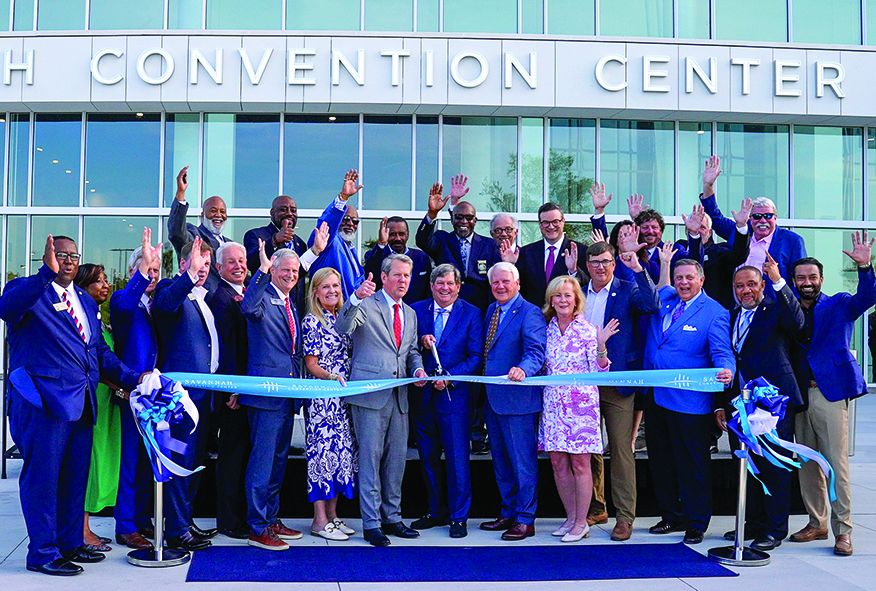

ASAE, Destinations International and NCBMP React to Brand USA Board Firings
By Todd McElwee
ASAE, Destinations International (DI)and the National Coalition of Black Meeting Professionals (NCBMP) have each offered comment on the surprising late April dismissal of five members of the Brand USA Board. Brand USA directed questions to the Depart of Commerce.
Allen Orr, Founder, Orr Immigration Law Firm PC, who served as board secretary, confirmed his dismissal to USAE. When asked about potential resignations from remaining board members, he shared he hoped they would not as it is an “important board for the nation.” Orr was the lone past or current board member to offer comment.
The five board members included Chair Elliott Ferguson, CEO, Destination DC; Vice Chair Lauren Bailey, CEO, Upward Projects; Kristen Esposito, Principal, Esposito Global Partners; Orr; and Tim Mapes, Chief Marketing and Communications Officer, Delta Air Lines. Skift reported the news.
A Department of Commerce spokesperson said: “Pursuant to the Brand USA bylaws, the service of five members of the Board of Directors has ended. The Department of Commerce thanks them for their service and looks forward to bringing the best and brightest leaders to the Brand USA Board to grow travel and tourism across the United States.”
USAE received the following comments from ASAE, DI and NCBMP, respectively:
“The association community has a vested interest in policies that strengthen—not disrupt—efforts to attract international visitors, and we urge continued support for Brand USA’s critical work during this time of uncertainty,” said ASAE President & CEO Michelle Mason, FASAE, CAE. “International visitation drives economic growth, supports jobs across sectors, and fosters global collaboration and understanding.”
Don Welsh, President & CEO of Destinations International, said: “Like many, we were surprised by the unexpected termination of the five executive board members at Brand USA last week, and most notably our good friend Elliott Ferguson. Clearly, this is a decision within the purview of the U.S. Department of Commerce that they opted to exercise.
“Since its establishment over a decade ago, Brand USA has performed exceptionally to support destinations across the United States. Its marketing efforts in 2024 alone generated 1.6 million incremental international visitors who spent $6 billion, delivered nearly $13 billion in total economic impact and helped sustain nearly 80,000 U.S. jobs.
“I know I speak on behalf of destination organizations across the Unites States in hoping that Brand USA maintains projected levels of funding so it can continue this critical work driving revenue, supporting jobs and building the brand image of the United States.
“It goes without saying that competition is fierce for the international traveler, and we hope that newly appointed board members will help lead and elevate the organization as we prepare to host the 2026 World Cup, America’s 250th anniversary, 2028 Olympics and other major events poised to attract a global audience to the United States.”
“The powers that be have made decisions that they believe supports their agenda, arguably at the expense of some of our industries brightest leaders, including our friend Elliott Ferguson,” said Jason E. Dunn Sr., CEO, NCBMP. “Brand USA is a national pillar within our ecosystem and must continue to be strengthened. However, NCBMP is not a political organization; but the nation’s politics do impact our members. Many of our industry colleagues have shied away from the current realities, hoping the complexities of today’s climate (diversity, equity & inclusion, tax reform, tariffs and immigration) will fade away. I’m sorry to say, that the complexities and realities are directly knocking at the door of our industry and are unavoidable.
Many of us are doing great work separately to advance the interest of our individual members in an effort to stay relevant or answer the call of action from our constituents. I believe the time is upon us that as a collective, we must find common things to agree on and stand for something without pride of ownership.
“If we continue to stay divided or quiet it’s just a matter of time before the headline reads: ‘DMO’s, Associations, Hotels, Not For Profits, Convention Centers, No Longer Needed.’”
On April 29, USAE contacted 11 leading meetings industry associations seeking comment. ASAE, DI and NCBMP were the only ones to do so. Two said no comment, with the remaining not responding.
In an email to Ferguson on hearing the news, Ross E. Heller, Publisher-Emeritus, USAE, wrote: “What has transpired vis a vis Brand USA is simply unspeakable. Board members such as yourselves are the best and brightest of our industry; are all VOLUNTEERS; and care deeply for everyone and every tourism-related business in our country. Perhaps the six others who weren’t so honored by our President should resign in solidarity with you and your four colleagues.”
Brand USA is supported by a combination of nonfederal contributions from destinations, travel brands, and private-sector organizations plus matching funds collected by the U.S. government from international visitors traveling under the Visa Waiver Program. The organization is governed by an 11-member Board of Directors appointed for a maximum of two consecutive three-year terms by the U.S. Secretary of Commerce in consultation with the Secretary of State and the Secretary of Homeland Security.

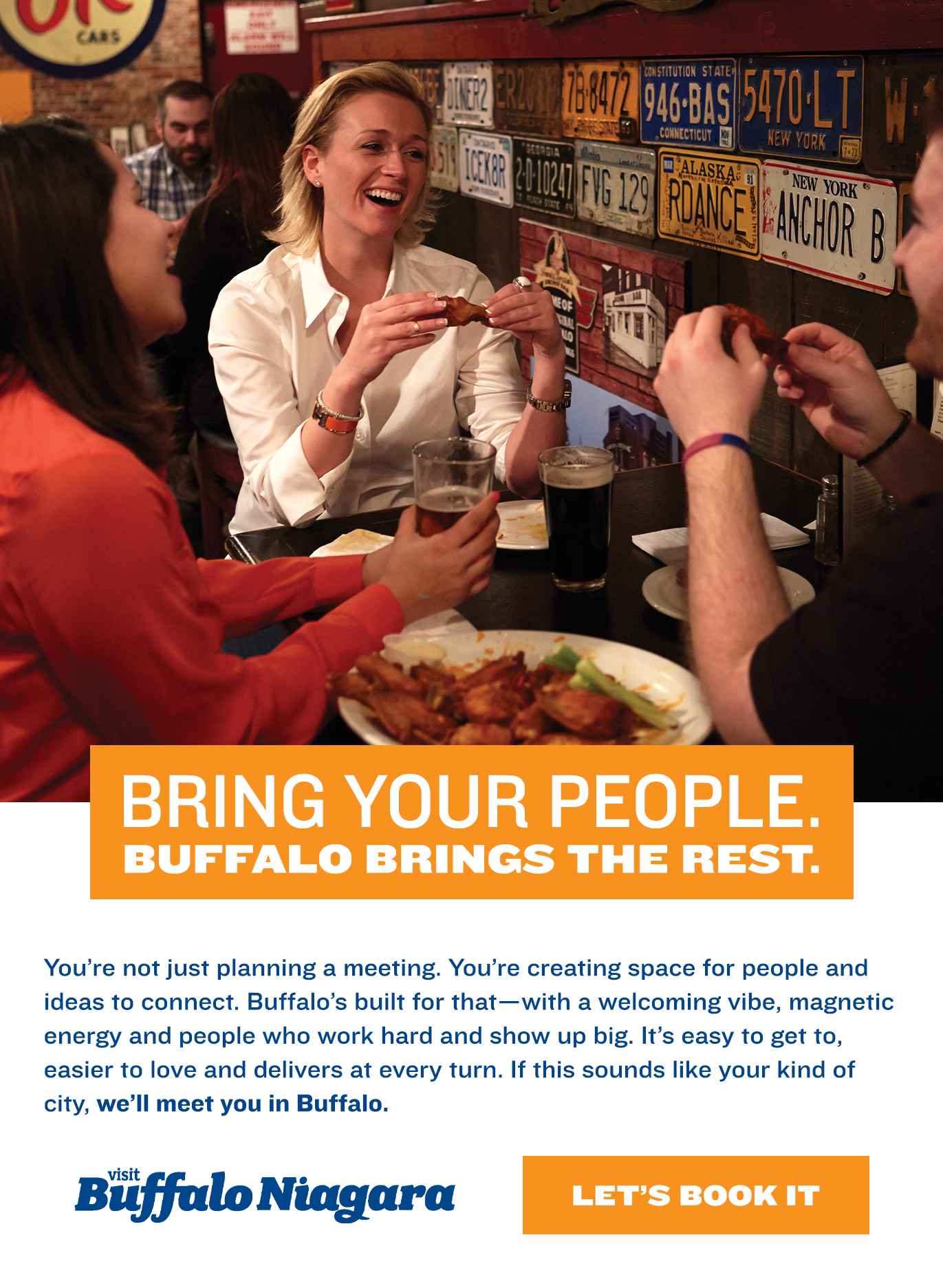

Hotel Fees Transparency Act Passes House
By Jordan Bradley
The United States House of Representatives passed the Hotel Fees Transparency Act of 2025 on April 28, garnering support from industry associations.
The bill, also known as H.R. 1479, sets forth to regulate hotel pricing practices so they are uniform across the industry in the United States and prohibits “unfair and deceptive advertising of prices for hotel rooms and other places of short-term lodging.”
Introduced by Reps. Young Kim (CA-R), Kathy Castor (FL-D), Russell Fry (SC-R), and Kevin Mullin (CA-D), the Hotel Fees Transparency Act now moves to the Senate for consideration before potentially going to the President’s desk for final approval.
The American Hotel and Lodging Association (AHLA) celebrated the bi-partisan bill’s passage.
The AHLA said: “We applaud the House for passing this important legislation and urge the Senate to do the same. AHLA continues to lead the charge for consistent, upfront pricing across the lodging industry. This commonsense bill creates a single standard for fee display, ensuring consumers know exactly what they’re paying when they book a reservation. A transparent process means a better experience and greater satisfaction for all guests.”
The Asian American Hotel Owners Association (AAHOA) lauded the passage of the Hotel Fees Transparency Act as a win for hoteliers and travelers, noting the association has “long advocated for fairness and transparency in pricing.”
“The House passage of the Hotel Fees Transparency Act is a critical milestone in protecting consumers from hidden fees and ensuring a more transparent marketplace,” said Laura Lee Blake, President and CEO, AAHOA. “We are especially grateful to Rep. Young Kim for her leadership in promoting cost transparency and working to make life more affordable for her constituents and all American travelers. AAHOA remains committed to advocating for policies that benefit hotel owners and consumers.”
The bill’s Senate companion last year died before it could be approved, and industry proponents for regulated and transparent pricing practices for hotels and short-term lodging are lauding its reintroduction to the Senate.
The Travel Technology Association said: “Travel Tech has been a vocal advocate of the Hotel Fees Transparency Act of 2025 and previously issued a letter of support for the reintroduction of S.314, the Senate companion bill to this legislation, which has since passed out of the Senate Commerce Committee. We strongly encourage the Senate to bring S.314 to a full floor vote and send this bill to the President’s desk for his signature.”



HOTS
HOTS Dog Day Afternoon… The Guinness World Records held a gathering for the world’s tallest living dog and the world’s shortest living dog “for a record-breaking puppy playdate,” UPI reported on April 30. Reginald, a 3-foot-3-inches-tall Great Dane, and Pearl, a 3.59-inch-tall Chihuahua, made an unlikely pair at Reginald’s home in Idaho. The 7-yearold Great Dane’s owner, Sam, said he was unconcerned about the playdate because Reginald is a big, sweet baby. “I’m not worried that [Reggie] won’t be careful around Pearl,” Sam said. “He’s very, very cautious and aware. I anticipate that he will be really good with her, and probably be more interested in Pearl’s owners than maybe Pearl herself.” And to her credit, Pearl is apparently a big fan of big dogs, according to her owner Vanessa Semler. “When Pearl meets bigger dogs, she is really friendly,” Semler said. “I think she has no idea she is a small dog. Normally, she’s really playful with bigger dogs, she just wants to be around [them].” According to UPI, the pair hit it off right away. HOTS thinks this kind of news warms the heart—big or small.
HOTS Asinine Airlift… A 27-yearold Chinese student was rescued from near the peak of Japan’s Mount Fuji not once but twice within the span of a week, the Associated Press reported on April 28. According to local police, the climber, a student, was airlifted from the peak the first time due to altitude sickness on April 22. During the commotion, the climber apparently left behind several belongings, including the cell phone that he used to make the initial emergency call for rescue—which he returned to the mountain’s Fujinomiya trail to retrieve on April 24. Another climber was summiting the trail and stumbled upon the student, who could not move after he again developed altitude sickness. According to AP, there is no charge or penalty when a climber on the mountain requires rescue. However, social media users have been outraged by the two rescues, demanding the climber be charged at least for his second escape from altitude sickness. HOTS wonders how many hikers have been rescued more than once like this guy.

Hotel Fees Transparency Act Passes House
By Jordan Bradley
The United States House of Representatives passed the Hotel Fees Transparency Act of 2025 on April 28, garnering support from industry associations.
The bill, also known as H.R. 1479, sets forth to regulate hotel pricing practices so they are uniform across the industry in the United States and prohibits “unfair and deceptive advertising of prices for hotel rooms and other places of short-term lodging.”
Introduced by Reps. Young Kim (CA-R), Kathy Castor (FL-D), Russell Fry (SC-R), and Kevin Mullin (CA-D), the Hotel Fees Transparency Act now moves to the Senate for consideration before potentially going to the President’s desk for final approval.
The American Hotel and Lodging Association (AHLA) celebrated the bi-partisan bill’s passage.
The AHLA said: “We applaud the House for passing this important legislation and urge the Senate to do the same. AHLA continues to lead the charge for consistent, upfront pricing across the lodging industry. This commonsense bill creates a single standard for fee display, ensuring consumers know exactly what they’re paying when they book a reservation. A transparent process means a better
experience and greater satisfaction for all guests.”
The Asian American Hotel Owners Association (AAHOA) lauded the passage of the Hotel Fees Transparency Act as a win for hoteliers and travelers, noting the association has “long advocated for fairness and transparency in pricing.”
“The House passage of the Hotel Fees Transparency Act is a critical milestone in protecting consumers from hidden fees and ensuring a more transparent marketplace,” said Laura Lee Blake, President and CEO, AAHOA. “We are especially grateful to Rep. Young Kim for her leadership in promoting cost transparency and working to make life more affordable for her constituents and all American travelers. AAHOA remains committed to advocating for policies that benefit hotel owners and consumers.”
The bill’s Senate companion last year died before it could be approved, and industry proponents for regulated and transparent pricing practices for hotels and short-term lodging are lauding its reintroduction to the Senate.
The Travel Technology Association said: “Travel Tech has been a vocal advocate of the Hotel Fees Transparency Act of 2025 and previously issued a letter of support for the reintroduction of S.314, the Senate companion bill to this legislation, which has since passed out of the Senate Commerce Committee. We strongly encourage the Senate to bring S.314 to a full floor vote and send this bill to the President’s desk for his signature.”

USAExchange
Conversation with Joe Marinelli, President & CEO, Visit Savannah

By Jonathan Trager
The Savannah Convention Center in Georgia completed a $276 million expansion in February. On April 30, the revamped facility was officially unveiled to the public, and USAE caught up with Visit Savannah leader Joe Marinelli to discuss the project.
USAE: Why is the convention center expansion so important for the city?
Marinelli: The dream of Savannah one day having a convention center began in 1990. Then it took about 10 years to get it moving and broke ground in 2000. We opened the building a few short years later. Now, 35 years after that dream, we have doubled the size from 300,000 square feet to 600,000 square feet. That includes a 200,000 square foot exhibit hall, a new 40,000 square foot grand ballroom, and a 900 space parking garage with a 900 space surface lot.
Savannah has traditionally been a very leisure driven tourism destination, but now with the expanded Savannah Convention Center we can position Savannah for new and larger national conventions. Tradeshow Week magazine previously had us listed as the 154th largest convention center, and now we’re the 72nd largest. We’re competing directly with many more cities, and we have the ability to establish ourselves as a viable convention city as well.
USAE: Tell me about the process of getting the project done?
Marinelli: The existing building has been successful from day one when it opened 25 years ago. But we’ve had more and more of our current customers telling us they were starting to outgrow our current facility. They were getting bigger and growing, and we weren’t able to accommodate them. Our board did their due diligence and studied what it would take to attract larger conventions. Once we were comfortable it would bring a strong return on investment, we appealed to the state of Georgia legislature. Six years ago, pre-Covid, we got the support of Gov. Brian Kemp’s office and the approval for $276 million.
USAE: What kind of meetings have been booked there so far?
Marinelli: Prior to the expansion opening, Savannah was the primary home for state association conventions in Georgia and South Carolina. Now when I look at the business that is on the books for the future and the new prospects, we have a tremendous amount of national associations, national corporations, and high-profile sports events we have either booked or are pursuing. The biggest one that stands out to me is the National Association of Counties, which will bring about 3,500 people to Savannah in July 2027. As an example of a sporting event, we will host the SEC women’s volleyball championships in November of this year.
USAE: What do you want planners to know about Savannah’s ability to accommodate their conventions or meetings?
Marinelli: Our air service now has nonstop air service from more than 40 cities in the United States, our hotel inventory now exceeds over 18,000 rooms, and we have a convention center with 600,000 square feet of space. When you add all of these together, it makes for an ideal destination for conventions, meetings, and tradeshows.



Women Leading the Way
Brandy Tomhave Leads with a People-First Mentality
By Jordan Bradley
Brandy Tomhave, Executive Director of the Native American Humane Society (NAHS) and an enrolled member of the Chocktaw Nation of Oklahoma, has learned a lot about leadership in her first year leading the association, she told USAE.
Most specifically, she said, the value of listening.
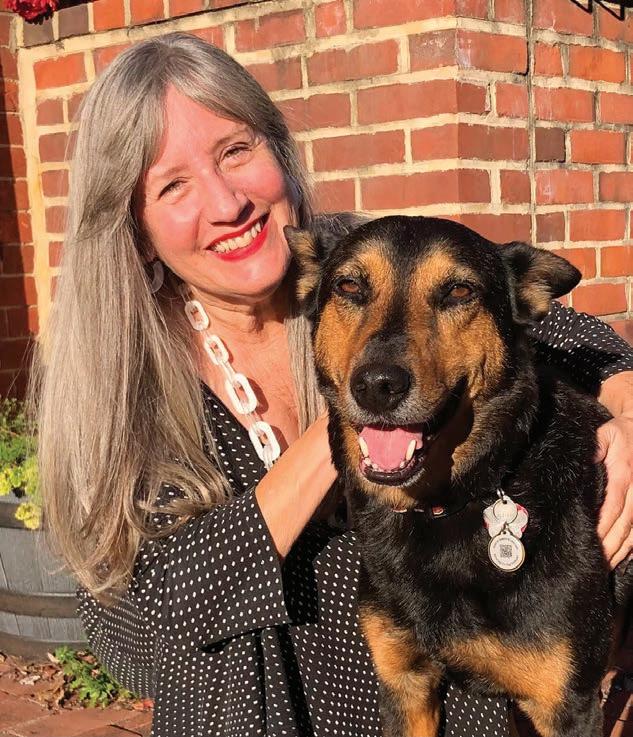
But before her leadership lessons in her position with NAHS, Tomhave worked alone frequently or as part of a two-person team. After graduating from University of California, Berkeley, with a degree in English—“which prepared me for almost nothing”— Tomhave and her mom started a business hand painting duvets, pillow shams and kimonos, and traveled the country selling them wholesale out of an old RV.
Throughout her time on the road, Tomhave came to realize, “as corny as it sounds,” that what she really wanted to do with the rest of her life was help people, “especially people who tend otherwise to be overlooked and ignored.”
“I wanted to be a voice for the voiceless, and I think it’s because I broke down so many times in what people on the coast consider the middle of nowhere and I got a front seat view of the destruction of Main Street in small towns,” Tomhave said. “If you travel on the road through small towns, rather than fly over them, it looks apocalyptic in a lot of places with windows boarded—and the folks who are left behind often are the ones who couldn’t get out.”
After four years of being on the road, Tomhave decided to pursue her law degree at Southern Methodist University, where she met her husband in the Native American Law Student Association. After they both graduated, Tomhave’s husband was offered an “amazing opportunity” to move to the east coast, where she began her career in law as a public defender.
“Most of my clients were just like my former neighbors when I was living on the road,” Tomhave said. “They were indigent, mentally ill, and they had committed misdemeanors as a result of their inability to access treatment.”
So when an opportunity appeared for her husband to be the founding executive director of a tribal environmental nonprofit organization, she went to work on Capitol Hil as a lobbyist for the first psychologist elected to Congress, Ted Strickland, who eventually went on to be governor of Ohio.
“Ted tasked me with finding a solution, creating a legislative solution, for individuals who are caught in a red tide of recidivism because of their untreated mental illness,” Tomhave said. “And so I had the privilege of drafting and helping shepherd to passage the legislation that authorizes the U.S. [Department of Justice] behavioral health court grants.”
After that, Tomhave began advocating for improvements to tribal environmental management, working with the Navajo Nation in Washington, D.C., and eventually joined her husband at the Tomhave Group, which consults primarily on community infrastructure needs on reservation land. Then, Tomhave was offered the role of executive director at NAHS, an opportunity she snatched without hesitation.
NAHS has a niche and heart-full purpose ripe with nuance. The association is dedicated to advocating for animal welfare on the 326 Native American reservation lands, rancherias, and Alaskan native villages throughout the United States.
Because all tribal land is held in trust of the federal government as a result of treaties, tribes are “federal dependent sovereigns,” Tomhave said. Tribes are unable to impose property taxes on reservations in order to pay for public services and instead rely upon funds from the government to support health, education, housing and public safety in many cases.
“Notice I did not mention animal services,” Tomhave added. “Back in the 1930s when the federal government started to decide how they’re going to manifest that responsibility, we didn’t know that veterinary services are critical to the health and safety of humans because of zoonotic diseases, so there are no federally funded animal services on Indian reservations and tribes don’t have the ability to levy the taxes that their non-tribal neighboring jurisdictions do to pay for those animal services.”
And being a vet on reservation land is no easy feat in and of itself, she added.
“There are almost no places to launch a practice from” due to lack of access to critical infrastructure such as running water and electricity, Tomhave said. “And they’re communities with some profound challenges economically.
We all know how expensive [animal] care is. Where there’s a market in a community with 86% unemployment—like on the Wind River Reservation in Wyoming—how are people going to pay for that?”
All of this creates a significant challenge to living on reservation lands: an overpopulation of mostly dogs as well as a critical lack of access to veterinary medicine and animal care.
In the face of these challenges, the association aims to do several things: uplift and empower Native Americans to address animal health care across reservations in ways that make the most sense to their lifestyles, offer educational resources on animal welfare and best caretaking practices for reservation residents, and connect community stakeholders with area organizations dedicated to serving the four-legged population.
For Native American communities, dogs are considered relations and hold traditional places in communities, Tomhave said.
“Traditionally, it’s not like dogs just showed up in tribal communities,” she said. “Dogs are present in a lot of tribes’ origin stories, their creation stories. Dogs have been a part of tribal communities since time immemorial—probably since they split off from wolves.”
But because of the limited space available in the federally funded housing on reservation lands, dogs and other companion animals frequently live outside, leading to
what appears to the unknowing eye as a large population of stray dogs. In reality, they are free ranging, often beloved members of the community, Tomhave noted.
Though the NAHS main focus is on animal care, Tomhave said, the association is a people-first organization.
“My job is to be a tribal advocate first, and then the animal welfare advocate second,” Tomhave said. “I don’t know of another organization like that in the country and that’s a tough place to be when working with animal advocates. We do not distinguish between the two- and four-legged members of a family in the community. We have to put people first, and that is necessary to then help the dogs and cats who rely upon people for their survival.”
As part of the association’s work, NAHS distributes informational pamphlets and resources to Native communities on the benefits of dog ownership for children and diabetics, the benefits of training your dog, and a coloring book for kids on how to take of their dogs. The association offers information on career paths in veterinary medicine as well. These resources are available on the NAHS website and distributed throughout reservations and native communities.
NAHS also connects community representatives on reservation lands with neighboring organizations working in animal advocacy in order to facilitate conversations about practical solutions to the overpopulation of dogs and other companion animals on reservation lands.
Tomhave is only the second executive director of the 10-year-old NAHS, succeeding its founder—who built the organization from the ground up and mostly on her own— last year, Tomhave said.
“I will tell you that as an advocate and a former federally registered lobbyist, I had some serious self-doubts about leadership,” Tomhave said.
Having spent her career as part of two-person teams, Tomhave found quickly the value of listening to both employees and community partners in leadership, she told USAE, learning that “less talking and more listening and visiting tribal communities, being in community, and listening to the real, true experts about all of this—who are the native people living in their own tribal communities” yields the most effective results.
As does “recognizing how to cultivate relationships” within those communities “and honor them in a way that elevates your constituency, not yourself,” she said.
Tomhave added: “I think that this has been a really humbling year of teaching me about understanding the limitations of my role and its true purpose—which is to facilitate the opportunity for the real experts and the true leaders for the folks on the ground to come together in a safe and supported space…As an outsider, it’s really important for communities to be able to articulate their own experiences in order to be able to develop the best solutions.”



AHLA and HTNG Release Lithium Battery Safety Guide for Hoteliers
By Jordan Bradley
The American Hotel and Lodging Association (AHLA) and its Hospitality Technology Next Generation (HTNG) released a lithium battery safety guide for hoteliers on April 23.
Lithium-based batteries are a growing power source in personal devices such as e-bikes, laptops and mobile phones that can sometimes overheat, causing fires. AHLA and HTNG’s safety guidelines aim to help hoteliers prevent, prepare for, and respond to these incidents, and offers a toolkit for travelers to help increase awareness.
According to the National Fire Prevention Association (NFPA): “While these batteries provide an effective and efficient source of power, the likelihood of them overheating, catching on fire, and even leading to explosions increases when they are damaged or improperly used, charged, or stored.”
The National Fire incident Reporting System also found that these lithium battery-related fires have become a rising concern at hotels, noting that more than 50% of those incidents between 2020 and 2024 involved e-scooters and e-bikes, popular modes of transportation in larger cities.
AHLA and HTNG’s safety guide includes best practices for lithium battery use, highlighting case studies of avoidable incidents.
In one scenario, a cordless phone powered by a lithium-polymer battery in a hotel guest room “spontaneously combusted causing an extremely high-heated fire to break out” that eventually damaged the night table, bed headboard, pillows, bedding, and mattress.
The safety guide’s recommendation for cordless phones powered by lithium batteries includes regular preventative maintenance programs as these batteries have a shelf life and “must be changed upon expiration,” the guide reads.
In another incident, a hotel employee was charging their electric scooter in the hotel kitchen when it caught fire and the battery exploded, causing damage to both the scooter and the kitchen wall. The employee had not been working that day and left the scooter to charge longer than is recommended.
According to AHLA and HTNG’s safety guide, e-scooters should not be hooked up to a power outlet for longer than it takes to fully charge the item. The hotel where the incident occurred also set electrical outlets on a four-hour timer following the fire as a failsafe.
“The safety of our guests and employees is our top priority and that’s why we are continuously updating protocols and guidance to address new and emerging risks. Lithium battery fire incidents are on the rise and can pose significant risks without the proper education and procedures,” said Rosanna Maietta, President and CEO, AHLA. “Our new tools will help hoteliers take practical steps to protect guests and employees, while staying ahead of this growing issue.”
The guide also offers links to other resources for continued education about lithium battery safety. For more information and to access lithium battery materials from AHLA, visit ahla.com.



PCMA Award Winner Elliott Ferguson Delivers Powerful Speech
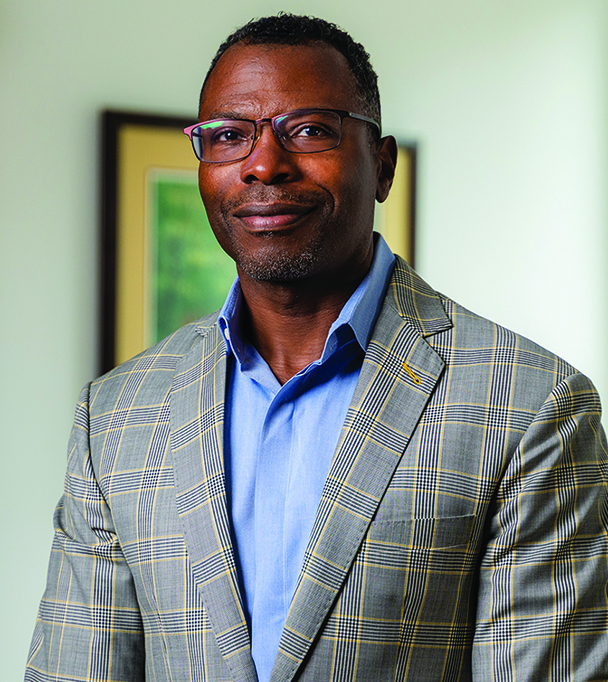
By Todd McElwee
Elliott L. Ferguson, President & CEO, Destination DC, had the meetings industry’s attention.
Delivering an acceptance speech for his PCMA Lifetime Achievement Award at the Visionary Awards on April 10 at the Walter E. Washington Convention Center in Washington, D.C.—the final one, and only thing standing between the audience and pork and beans, he joked—Ferguson used the moment to thank those essential to his success, share his love for hospitality and get some laughs. But then, he got to the point.
Discussing diversity, he gave the audience some homework. The assignment included recognizing the difference between knowing people and saying they’re your friends versus actually being their friends, with the latter requiring an understanding of what it is like for them in their space and within the meetings industry.
“Let’s talk about that, he said. “Let’s have uncomfortable conversations so that we can learn a little more about each other.”
USAE connected with Ferguson a few weeks after the speech to learn more about his story. Ferguson touched on his industry journey from Savannah to Atlanta to D.C., and he shared a story or two about past experiences. He talked about moving from Washington State and California to the South, and his grandparents, who were of Caribbean and Southern origin, and their experiences with racism.
However, the lion’s share of the Zoom call was occupied by today and tomorrow, including his altered approach to uncomfortable situations, expectations of upcoming generations and using his platform for progress.
As evident from the Visionary Awards Ferguson is not shy about using his pulpit. His message is not conveyed via fire and brimstone, but rather in a measured, thoughtful and straightforward delivery. He has embraced the uncomfortable and will not hesitate to engage in an awkward and difficult conversation when called for.
“Travel has given me the opportunity to learn more, a lot more about how we are alike in terms of human beings and how different we are, and to celebrate our differences versus weaponize them,” he said. “And I say that as a guy that started out in the industry, in the South and Savannah, Georgia. I was in a National Guard, and a lot of the things that I learned along the way were either taught to me by my Southern grandparents or my Caribbean grandparents.”
One of those lessons was how to navigate in a space where you are truly the minority, which is something that he said he learned really quickly.
During his Zoom with USAE, Ferguson shared an anecdote he has mentioned previously. He received an international award and coming off the stage in a tuxedo and was asked by someone to pour them a drink because they thought he was a server.
“My initial reaction, because everybody around me was shocked, was to make them feel comfortable in that situation, and but then I walked away from that situation, and I felt awful,” he said. “I was angry. You know it didn’t disrupt my entire evening, but it was disruptive in terms of the moment of joy that I felt in terms of getting the award, and how moving forward, it’ll be a more of a teachable moment to bring to everyone’s attention. This is something that, if you’re not a white male, mostly, you’re inevitably going to experience something like this that makes you feel uncomfortable.”
In 2020, that approach changed when Ferguson was Chair of U.S. Travel Association. He had conversations with Al Hutchinson and Cleo Battle and Melvin Tennant and a series of other individuals. They talked about things they didn’t talk about to people that don’t look like us, and said it’s time for us to really rethink that.
Learning to gain understanding is paramount to Ferguson.
“I think from 2020 moving forward, I will no longer take that approach (making everyone comfortable),” he said. “You know, I will not throw my glasses of wine in that person’s face or do something like that, but I will make sure that I use that opportunity to not make people feel comfortable, because I’m not comfortable. And I think that’s what it’s all about, learning how to, you know, are we learning from situations like this so that we can do better and we don’t automatically make assumptions about people because of the color of their skin, because of their handicap, because of their sexuality or their sex.”
Ferguson also pointed out younger generations have different expectations.
“There are a lot of leaders that are my age group that were influenced by things that their parents, grandparents, great grandparents said that were maybe negative about or stereotypical about other people,” he said. “How did that impact how you look at people that are not of your race or your gender? And do you see some of that in how you have interacted with people and maybe how you treat yourself, and can you make some corrective measures? Because the expectation of the younger generations is that’s not going to be tolerated.”
Ferguson is ready to have a conversation. He’ll tell you his story and is ready to hear yours as well.
“The space that I’m in in my career has afforded me opportunities to be a voice in the industry, and the thing that I’m happiest about is that I am in a position to make a difference... I’m happy that you called to say, I want to have a conversation based on what was said a few weeks ago at the PCMA event, because that’s what it’s about. How do we have this dialog?
He added: “I don’t need people to say, your speech was great. I want to know that it has made a difference, and that people went back and thought about it and challenged their leadership and are thinking differently because of some of the things that were said to start is that’s, that’s what makes me happy to start a conversation.”
Editor’s note: This interview was conducted before the Brand USA news broke.



Events Industry Council Opens Nominations for Hall of Leaders
Gala Set for October in Las Vegas
By Todd McElwee
Nominations are now open for the Events Industry Council’s (EIC) Hall of Leaders and its other annual awards.
On May 1, EIC also announced it will host the 2025 Global Awards Gala on October 6 at Aria Resort & Casino in Las Vegas.
More than 160 leaders have been inducted into the Hall of Leaders. The Global Awards will also recognize innovation and leadership in the business events industry with the following awards: Pacesetter Award, EIC Social Impact Award, and the EIC Adaptation and Innovation Award.
Nominations can be made through June 6.
“This Global Awards offers a wonderful opportunity for our global community to celebrate and reflect on the legacy of our sector and the remarkable achievements of so many leaders who have had a profound impact on the business events industry and society in general,” said Amy Calvert, President & CEO, EIC. “Now, in a moment where the entire world is grappling with increased uncertainty, it is more important than ever that we recognize the true purpose and value of the in-person experiences we create. With more than 1.6 billion participants engaging in business events annually, we truly can be a catalyst for the change we envision.”
MGM Resorts will once again be hosting the event. Stephanie Glanzer, Sr. Vice President & Chief Sales Officer of MGM Resorts said: “Partnering with EIC to host this wonderful event each year is such an honor for MGM, and we look forward to welcoming EIC members, award recipients and others in October,” said. “We always welcome the opportunity to work with EIC to not only drive the meetings industry forward, but also recognize and celebrate the leaders who make the magic happen every day.”
The 2025 Global Events Celebration falls immediately before IMEX America, October 7–9 at Mandalay Bay, Resort & Casino.
“We are excited and honored to bring together a truly global representation of our membership, our global CMP community and other industry stakeholders for this annual event— especially at this reflection point for our industry,” said 2025 EIC Board Chair and CEO of ICCA Senthil Gopnath. “These awards are always one of the biggest highlights of the year for the global business events industry and reflect what we do best—bring people together and build human connection.” Find more information at eventscouncil.org.



Visit Orlando Appoints Charles Harris to Chief Operating Officer
By Jonathan Trager
Visit Orlando, which represents the top travel destination in the United States, has named Charles Harris as Chief Operating Officer, the organization announced on April 29.

Harris will oversee internal operations, as well as lead and implement Visit Orlando’s strategic plans and annual business plans, “ensuring alignment with the organization’s mission, vision and values,” according to Visit Orlando. He’ll also directly manage the group’s Digital & Data Strategy, Human Resources and Finance &
Business Affairs teams, which includes IT and Market Research and Insights. “Destination Marketing Organizations are vital to the ecosystem of the travel and tourism industry and the local communities they serve,” said Harris. “This is especially true for an industry leader like Visit Orlando. Visit Orlando’s reputation for being the best in the business with a high-performing team and exceptional leadership, made this an opportunity I couldn’t pass up.”
Before joining Visit Orlando, Harris served as President & CEO at RSCVA/ Reno Tahoe, leading a team of 120
full-time employees. Under his leadership, the organization “achieved record-setting monthly room tax revenue totals, generated unprecedented direct visitor spending, and secured long-term business engagements, including hosting the Davis Cup Tennis match and extending sales contracts with the United States Bowling Congress,” Visit Orlando stated.
Harris also held the position of Chief Marketing Officer/Executive Vice President Public Affairs at Visit Anaheim, where he created and executed comprehensive marketing plans leading to more than 100 marketing industry accolades. Other previous positions include executive experience at Luxe Hotels and Experian Interactive, and he has worked in communications and community development with the Los Angeles Dodgers and Anaheim Ducks, respectively.
Harris will report to Visit Orlando President & CEO Casandra Matej.
“Our nationwide search for a Chief Operating Officer found Charles to be the complete package—with his comprehensive experience in destination management and marketing, cross-functional operational leadership and consistent track record leading results-driven teams,” said Casandra Matej, President & CEO of Visit Orlando. “Charles brings a fresh perspective to Visit Orlando that will elevate our operational functions and help us achieve our strategic initiatives.”
Harris has been recognized in “The BizBash 500” as one of the most influential event professionals and has earned numerous awards, including the Catalyst Award: Momentum by Smart Meetings. He has also served on various boards, including for US Travel, Nevada State Tourism Board, and Destinations International CDME.

First Hotel in a Century Opens on Lake Minnetonka
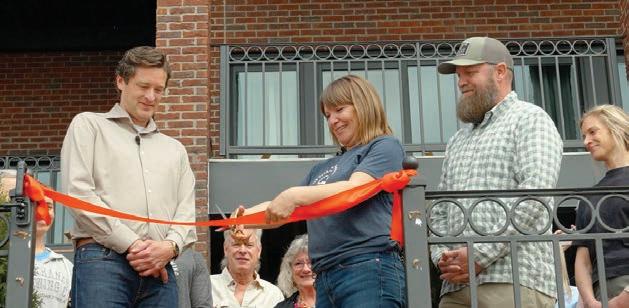
By Jordan Bradley
The first hotel in a century opened on Lake Minnetonka in Minnesota on May 1.
The 27-room Shoreline Hotel celebrated the momentous occasion with a ribbon-cutting ceremony opening morning followed by room previews head of check-in and the grand opening of the property’s restaurant, Cabana Anna’s, for dinner service.
Twenty-three of the $16 million property’s guest rooms include floor-to-ceiling windows with a view of Lake Minnetonka. The property also offers a host of lakefront amenities, including a sand beach, yoga classes, paddle
boards, surf lessons, and a marina with 32 boat slips and corresponding boat parking for hotel and restaurant guests, according to the Minnesota Star Tribune
The hotel is the first to be opened along the Minnesota lakeshore since the Lafayette Club was constructed in 1924, Olsen told the Star Tribune Since the early 1990s, developers have pursued hotel projects along the lakeshore, but have all fallen through for various reasons, the outlet reports, including Minnesota’s harsh winters.
Before it became the Shoreline Hotel, the property acted as an office building. Half-vacant for years, the building went on the market in 2021, the Finance & Commerce reports, and developer Kelly Olson saw an opportunity to find a creative new purpose for it.
“I live right around the corner from this building, and I kept driving by and…it just seemed really underutilized for the location and the view,” Olsen told Finance and Commerce.
According to Olsen, it took three years to transform the underutilized office space into the boutique leisure hotel it is today, and it was challenging to get the necessary approval for the boutique hotel, despite the fact that she did not change anything structurally about the building.
“The [city] approval process was very difficult,” Olsen said, according to the Star Tribune. “They were worried about parking. They were worried about sound. They were worried about smell coming from the kitchen.”
The property is managed by Leisure hotels & Resorts, and aims to encourage guests to “slow down, connect and enjoy life’s simple pleasures” during their stay, Olsen said.
“I wanted to build this hotel as if I was a guest, putting in the extra touches that will set us apart,” she said. Room rates begin at $299 per night. Visit shorelinehotel.com for more information.

— OBITUARY —
HSMAI Executive Jason Smith Dies Suddenly
By Jordan Bradley
The Hospitality Sales and Marketing Association International (HSMAI) announced on April 30 the sudden passing of Jason Smith, the association’s Vice President of Marketing Communications.
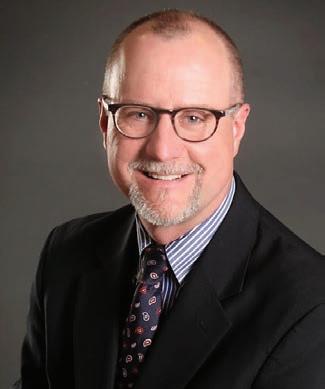
Smith has been “instrumental in advancing the association’s marketing communications initiatives, overseeing the organization’s digital presence, public relations efforts, and social media strategy,” HSMAI said.
“I’ve had the honor of knowing Jason for many years, but it wasn’t until I started at HSMAI in November that I saw the deep passion he had for HSMAI and seeing firsthand his mastery in the craft of Marketing and Communications,” said Brian Hicks, President and CEO, HSMAI. “His contributions and dedication to HSMAI will leave a legacy within the association. I am truly grateful for his exceptional support and guidance since joining the association.”
Smith attended Cornell University, where he received a Bachelor of Science degree in Hotel Administration, according to his LinkedIn account. After graduating, Smith went on to hold editorial positions with Whittle Communications, USA Today, and the National Restaurant Association.
Smith joined HSMAI in January 2001, holding numerous volunteer roles throughout HSMAI and other associations, including as restore marketer for Habitat for Humanity of Northern Virginia, research committee member for the American Hotel and Lodging Association Foundation, judge for the Society of National Association Publications Excel Awards and the American Society of Association Executives’ Marketing Communications Gold Circle Awards. Smith also volunteered as a meal creator and distributor for the World Central Kitchen.
“Working with Jason was truly a privilege. As VP of Communications for HSMAI, he brought professionalism, creativity, and heart to everything he touched,” said Andrew Rubinacci, Chief Advisory Officer for FLYR Hospitality, and Chair, HSMAI Americas. “He was with us for the highs and lows over the past 25 years and was always a calming influence. His passion for the industry and talent made a lasting impact on all of us. He will be deeply missed, both as a colleague and a friend.”
In its statement, HSMAI said: “HSMAI extends its deepest condolences to Jason’s family, friends, and colleagues.”
Although Smith’s family had not yet released an obituary by press deadline, HSMAI said the family asked that, in lieu of flowers, donations in Smith’s honor be made to World Central Kitchen.

The Final Word
Adapting to a Changing Landscape: How Federal Policy and Funding Shifts Are Driving Innovation and Evolving Association Meetings

By Amy Hissrich, CAE, Vice President, International Affairs, ASAE
Recent federal policy changes and funding shifts have affected association meetings. ASAE’s April 2025 Insight Update shows attendance has declined, but speaker, exhibitor, and sponsor participation remain steady.
One of the most significant impacts has been on professional and combined associations, where more than half reported decreased metrics. In contrast, trade associations have been less affected, with fewer decreases in attendance and the highest percentage of increases among all groups. This divergence underscores the varied responses among different types of associations to the changing federal landscape. The update also emphasizes the broad decline in international participation at U.S.-based events.
In response to these challenges, associations are adapting their meeting strategies. Many are transitioning to virtual or hybrid formats to accommodate travel restrictions and budget constraints. Additionally, associations are reducing the duration and scale of their events, renegotiating venue contracts, and exploring new revenue streams such as on-demand access to recorded content.
Despite a rapidly changing environment including increased costs, these shifts have prompted innovation within the sector. Associations are reimagining events to focus more deeply on delivering member value in a rapidly evolving environment. There is a renewed emphasis on accessibility, engagement, and adapting content to address rapidly changing policies and regulations.
Key Findings Include:
• Decline in Attendee Numbers: Half of respondents reported decreased attendance at their meetings, while participation from speakers, exhibitors, and sponsors remained relatively stable.
• Exhibitor Resilience: Exhibitor participation was the most stable metric, with 66.9% of associations reporting no change.
• Professional Associations Hit Hardest: More than half of professional and combined associations reported declines, while trade associations saw fewer decreases and a higher percentage of increases (14.5%) than any other group.
• International Participation Impacted: The decline is most evident in attendance from Canada and Europe and Central Asia—regions historically well represented at U.S.-based events.
“These findings underscore how external forces are compelling associations to reimagine events in ways that prioritize member value, accessibility and flexibility,” said ASAE President and CEO Michelle Mason, FASAE, CAE. “While the environment is undeniably challenging, we’re also seeing incredible innovation and resilience across the community.”
The most recent survey was distributed to 3,118 CEOs of associations and association management companies (AMCs), with 210 responses analyzed. This study is part an ongoing series of ASAE member polls providing associations with timely, nonpartisan insights to inform strategic planning.
Overall, the federal policy and funding shifts are reshaping the association meeting landscape. While there have been some negative effects, the policies are driving associations to adopt agile strategies and fostering a period of significant innovation and transformation.
More information is available at asaecenter.org.

Salt Lake Sells Part of Salt Palace Convention Center
By Jonathan Trager
The Salt Lake County Council has approved the sale of a large part of the Salt Palace Convention Center to Ryan Smith’s Smith Entertainment Group (SEG), the owner of the Utah Jazz and Utah Hockey Club.
On April 29, the council unanimously moved to sell 12 parcels of land—6.5 acres of downtown property—for nearly $55,433,000. That includes Salt Palace’s largest exhibit hall, along with a smaller exhibit hall and a connected parking garage, the Salt Lake Tribune reported. SEG will take possession of the land by February 2027.
In a statement, the county said the sale “marks a transformative investment in Salt Lake County’s economic future.”
The statement read: “It is anticipated that upon the transfer of the land to SEG, the exhibit hall space will be demolished and rebuilt in a newly designed section of the Salt Palace. Construction will take place in a strategically phased approach to minimize disruption to planned events and a portion of the facility will remain operational throughout the process, ensuring that the Salt Place can continue to host conventions.”
Proceeds from the sale will go to a remodeling of the facility, estimated to cost $1.5 billion total. The project will included a second ballroom that will allow the facility to host multiple major events simultaneously. The county has issued a request for proposals to select an architectural firm for the project.
According to Gephardt Daily, County Council Chair Dea Theodore said the project will be “one of the most exciting and transformative projects our county has ever undertaken. It will generate millions in new property tax revenue, create jobs, boost tourism, strengthen local businesses across the county, and help fund critical upgrades to the Salt Palace Convention Center to help Utah maintain its status as a world-class event destination.”

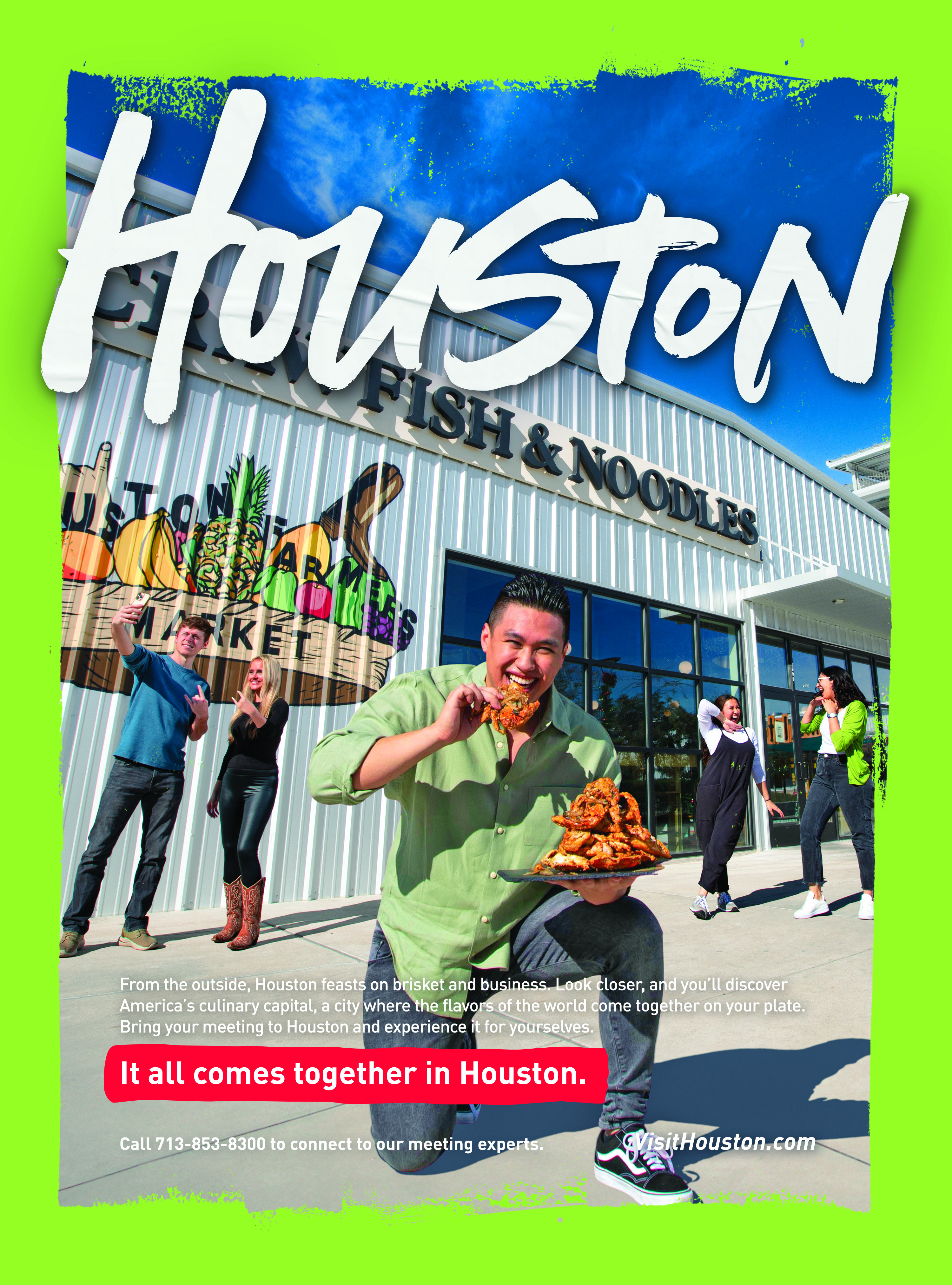

More stories -
Nelly Playing Closing Event at MPI’s WEC in St. Louis
Pocono Mountains Visitors Bureau Tackling Local Housing and Homeless Issues

Advertorial
Niagara Falls USA
A Powerful and Inspiring Meeting Destination

Niagara Falls, New York is most famous for its stunning natural beauty, but it is also an ideal location for meetings and conventions for groups from 10 to 1,500. Its connected downtown area offers state-of-the-art convention facilities, bucket list-worthy attractions, affordable lodging, and convenient travel options for getting to and around the region.
Accommodations: Downtown Niagara Falls boasts over 1,000 committable hotel rooms within a three-block radius of the Niagara Falls Convention Center. Accommodations range from an AAA rated Four Diamond casino resort to contemporary hotels and economical overflow options. Our destination has accommodation options that suit every group’s size, preference, and budget.

Meeting & Event Venues: Ample meeting space can be found throughout Niagara Falls USA. Whether you’re looking for traditional conference rooms and exhibit halls or sweeping ballrooms and beautiful outdoor backdrops, our team will work with you to find a venue that fits your desired vibe. The Niagara Falls Convention Center offers versatile meeting and event space all on one level, and can accommodate a variety of events, complete with in-house catering and audio-visual services.
Things to Do: The walkability of Niagara Falls’ downtown corridor means attendees can enjoy downtime immediately following the event. Just a short stroll from most downtown hotels and meeting spaces, attendees can view Niagara Falls from several vantage points, and experience the mighty power of the Falls with our get-wet, up-close-and-personal attractions including Maid of the Mist and Cave of the Winds. The Niagara Gorge Trail System offers an abundance of outdoor recreation activities, including some of the best hiking and biking trails, as well as excellent birding opportunities. Nearby, attendees can choose from a variety of delicious dining options to recharge for the day ahead.
Airport & Transportation Options: Niagara Falls USA’s location makes transportation a breeze. By air travel, the Buffalo Niagara International Airport offers upwards of 100 daily flights, with nonstop service to 31 airports. Two major Amtrak service lines connect the region to much of the East Coast and Canada; the Niagara Falls International Train Station is located less than three miles from downtown. By car, Niagara Falls USA is connected to I-90, offering easy driving access from just about anywhere.
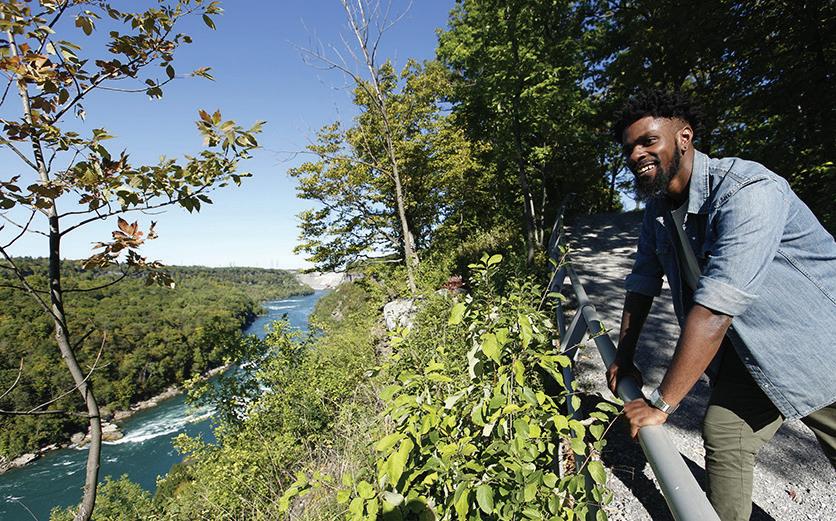
Special Services/Amenities/Planner Incentives: The team at Destination Niagara USA is ready to help every step of the way — from pre-conference planning to onsite service assistance. Complimentary services include customized site visits, collecting proposals from hotels and meeting venues, public relations and marketing support, and resources for attendance building to ensure a successful event. Ask us about our meetings incentive program, too!
Contact: Destination Niagara USA
Reanna Darone, Director of Convention Sales
Phone: 1-877 FALLS US
Email: rdarone@niagarafallsusa.com
Website: niagarafallsusa.com

Advertorial
Greater Fort Lauderdale: The Perfect Blend of Business, Beaches, and Unforgettable Experiences

Greater Fort Lauderdale transforms meetings into immersive moments, where ocean breezes, upscale amenities, and vibrant local culture combine to create a destination that’s as productive as it is inspiring. From the moment visitors arrive, they’re met with a sense of place that invites them to stay a little longer, explore a little deeper, and connect on a whole new level.
The foundation of the region’s meetings appeal begins at the Broward County Convention Center in Fort Lauderdale, a newly expanded waterfront facility offering 1.2 million square feet of total space, including 350,000 square feet of contiguous exhibit space. Designed with both scale and flexibility in mind, the center brings together cutting-edge design, sustainable features, and proximity to everything attendees want to see and do. It’s a short walk—or an even shorter drive—from many of the area’s top hotels, including the brand-new 801-room Omni Fort Lauderdale headquarters hotel currently under development that connects to the convention center and is now taking reservations for September 2025.
Surrounding the convention center is a wide array of lodging that makes it easy for planners to match convenience with comfort. With over 38,000 hotel rooms available across the region and more than 3,500 within 1.5 miles of the center, guests have their choice of beachside resorts, high-rise brands, and boutique properties. Hotels like the Hilton Fort Lauderdale Marina, Renaissance Fort Lauderdale Marina Hotel, Embassy Suites on 17th Street, and B Ocean Resort provide ideal accommodations for business travelers, while resorts such as The Ritz-Carlton, Fort Lauderdale and Lago Mar Beach Resort & Club offer elevated escapes for those extending their stay or bringing family along for the trip.
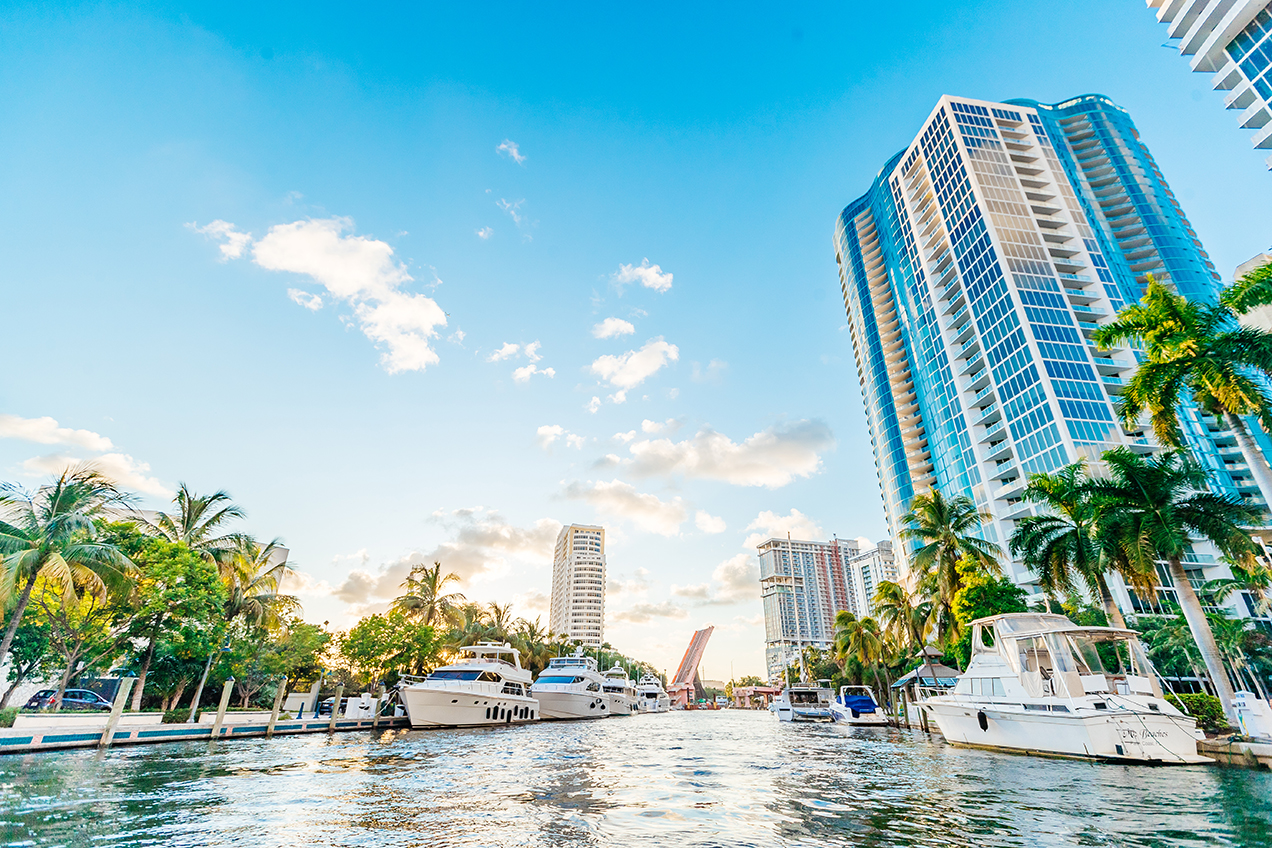
Beyond the boardroom, Greater Fort Lauderdale is a destination that invites you to savor every moment—and that starts with the food. The dining scene here reflects the region’s international influences and coastal roots, offering everything from fresh-caught seafood and dock-and-dine spots to global fusion and locally loved gems. Restaurants like Boatyard and S3 pair elevated menus with unbeatable views, while Takato’s beachfront sushi and Louie Bossi’s wood-fired Italian classics are crowd-pleasers for client dinners or team outings. Walkable dining districts like Las Olas Boulevard and Flagler Village keep the energy going well into the evening, with outdoor patios, chef-driven concepts, and live music adding flavor to every bite.
One of the most defining features of the destination is its connection to the water—and that connection runs deeper than just scenery. Known as the “Yachting Capital of the World,” Greater Fort Lauderdale boasts more than 300 miles of navigable waterways that shape not only the landscape but the lifestyle. The water becomes part of the meeting experience, with opportunities for paddleboarding through mangrove trails, water taxi rides between venues, and private yacht charters that double as unforgettable networking events. Here, planners don’t have to invent ways to keep attendees engaged—the setting does it naturally.
Those looking to extend their trip or fill in downtime will find plenty of options to unwind, shop, and explore. Las Olas Boulevard combines upscale boutiques, galleries, and sidewalk cafés in a walkable stretch that’s perfect for solo strolls or group excursions. For more robust retail therapy, The Galleria at Fort Lauderdale features major fashion and lifestyle brands, while Sawgrass Mills—one of the largest outlet shopping destinations in the U.S.—is a short drive away and perfect for serious shoppers.

Adding to the destination’s depth is a rich cultural scene that reflects its diverse community and creative spirit. From modern art exhibitions at the NSU Art Museum to world-class performances at the Broward Center for the Performing Arts, the area celebrates culture with a coastal twist. Many of these institutions also double as unique venues for offsite events, allowing planners to add a sophisticated touch to receptions or breakout sessions. The region’s inclusivity makes it especially welcoming to LGBTQ+ travelers, international guests, and multigenerational groups—an important consideration for today’s diverse audiences.
Accessibility is another key advantage of choosing Greater Fort Lauderdale for meetings and events. The Fort Lauderdale-Hollywood International Airport (FLL) is located just minutes from the convention center and connects to over 100 domestic and international destinations, making travel easy for attendees from around the world. For those looking to explore more of South Florida, Brightline high-speed rail service provides quick and comfortable access to the region, expanding the possibilities for pre- or post-event adventures without the need for additional flights or rental cars.
In the end, Greater Fort Lauderdale offers more than a place to meet—it offers a destination that inspires. With stunning settings, smart infrastructure, and a lifestyle that’s equal parts laid-back and luxe, this is a place where work and play don’t compete—they complement. For planners looking to create meaningful, memorable events, there’s no better setting to do it all.
Learn more at
www.visitlauderdale.com/meetings

USAE Contacts
Ross E. Heller, Publisher-Emeritus
Publisher James Heller james@usaenews.com
Associate Publisher Todd McElwee todd@usaenews.com
Managing Editor Jonathan Trager jon@usaenews.com
Hotel Editor Jordan Bradley jordan@usaenews.com
Creative Director Diane Nichols dkn@usaenews.com
Marketing & Circulation Director Christy Pumphrey christy@usaenews.com
USAE, Inc.
PO Box 15009, Chevy Chase, MD 20825
703.898.3528 • ©2025 by USAE, Inc.


